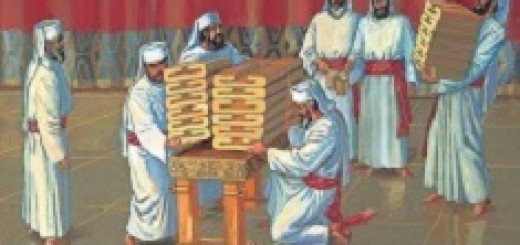By Shalom Olensky
This week in the Torah:
After opening this week’s section with remembering the deaths of two of Aaron’s sons (Nadav and Avihu), G-d instructs the High Priest, Kohein Gadol, Aaron and his successors, to refrain from entering the Holy of Holies in the Temple aside for once a year, on Yom Kippur, to offer Incense. By keeping to this regimen the Kohein’s life shall be spared.
Rabbi Chaim ibn Atar (in his commentary, Or Hachaim):
One interpretation of the aforementioned opening with commemoration of the deaths of Nadav and Avihu, is that the Torah is telling us that Nadav and Avihu were righteous in their actions and their deaths were, purely, self-sacrifice and an automatic result of coming so close to G-d. They expired out of a state of Divine bliss, the like of which is experienced only by the most righteous.
Question:
According to the above interpretation, how do we understand the order of the passages? What is the connection between the great level of Nadav and Avihu to the observances of Yom Kippur which is dwelt upon in the following passages?
Preface:
From various commentaries we learn that Nadav and Avihu are called G-d’s “confidants” with whom the Sanctuary “was sanctified.” They accomplished this by burning Incense in the Sanctuary and by reaching the point of expiration in spiritual bliss.
The significance of the Incense, as opposed to a normal sacrifice of sheep, cattle or meal offerings, is that regular sacrifices are focused on elevating the mundane, while Incense reflects the ascent of the Kohein himself to G-d.
This explains why Incense is delegated to the Altar of the “Inner” Sanctum, while all other offerings are offered on the “External” Altar.
This also translates into two levels of Divine service: A) Consecrating (“sacrificing”) the externality – the garb – of one’s soul, made up of thought, speech and action. B) Revealing the inner dimension of one’s soul which is steadfastly bound to G-d and unified with Him as one (“Incense” on the “Inner” Altar).
Nadav and Avihu sanctified the Sanctuary with Incense and expiring from immense unification with G-d, signifying the unification of the very Sanctuary itself with G-d, which would not have been apparent with just regular sacrifices.
Answer:
This unification with G-d is the meaning of Yom Kippur. Once a year the inner dimension of every Jew’s soul is revealed, and since on that level the soul was always unified with G-d, the revelation of this level wipes away sin which is attributed to the trials and tribulations of the external dimensions of the soul. Hence, the “Day of Atonement,” Yom Kippur, and its connection to the service of Nadav and Avihu.
As mentioned above:
This week the Torah speaks of Nadav and Avihu’s great devotion which empowers us so that on at least one day a year the inner dimension of our eternal G-dly soul is revealed (and this has an effect on the whole year as well). Concurrently, the Torah tells us that despite the need for Nadav and Avihu to expire then in order to sanctify the Sanctuary, this was a one-time exception. We, on the other hand, are to reveal our inner soul and its constant commitment to G-d all the while keeping the soul inside the body, healthily, and in long life. This is in order to fulfill G-d’s will that we make for Him a G-dly dwelling in specifically the lowest realms.
(Based on Likkutei Sichos Vol. 32, Acharei)






















